2019 Thesis Cohort
On this page:
Trevor Bak
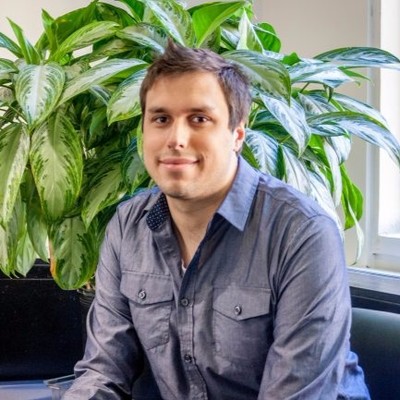 Trevor Bak was born in Scottsdale Arizona and grew up on the outskirts of Seattle in Sammamish Washington. He graduated with a BA in psychology from the University of Chicago and stayed in the midwest after graduation to pursue research at the intersection of public health and psychology. He decided to transfer into conservation science and obtain a degree in the Tropical Conservation Biology and Environmental Science Program at the University of Hawai'i at Hilo to facilitate this transition. His thesis is entitled, “A Global Ecological Signal of Extinction Risk in Marine Ray-Finned Fishes”. After graduation he plans to continue pursuing a research career in conservation science by completing a PhD with a focus on modern extinction.
Trevor Bak was born in Scottsdale Arizona and grew up on the outskirts of Seattle in Sammamish Washington. He graduated with a BA in psychology from the University of Chicago and stayed in the midwest after graduation to pursue research at the intersection of public health and psychology. He decided to transfer into conservation science and obtain a degree in the Tropical Conservation Biology and Environmental Science Program at the University of Hawai'i at Hilo to facilitate this transition. His thesis is entitled, “A Global Ecological Signal of Extinction Risk in Marine Ray-Finned Fishes”. After graduation he plans to continue pursuing a research career in conservation science by completing a PhD with a focus on modern extinction.
Keilani Bonis-Ericksen
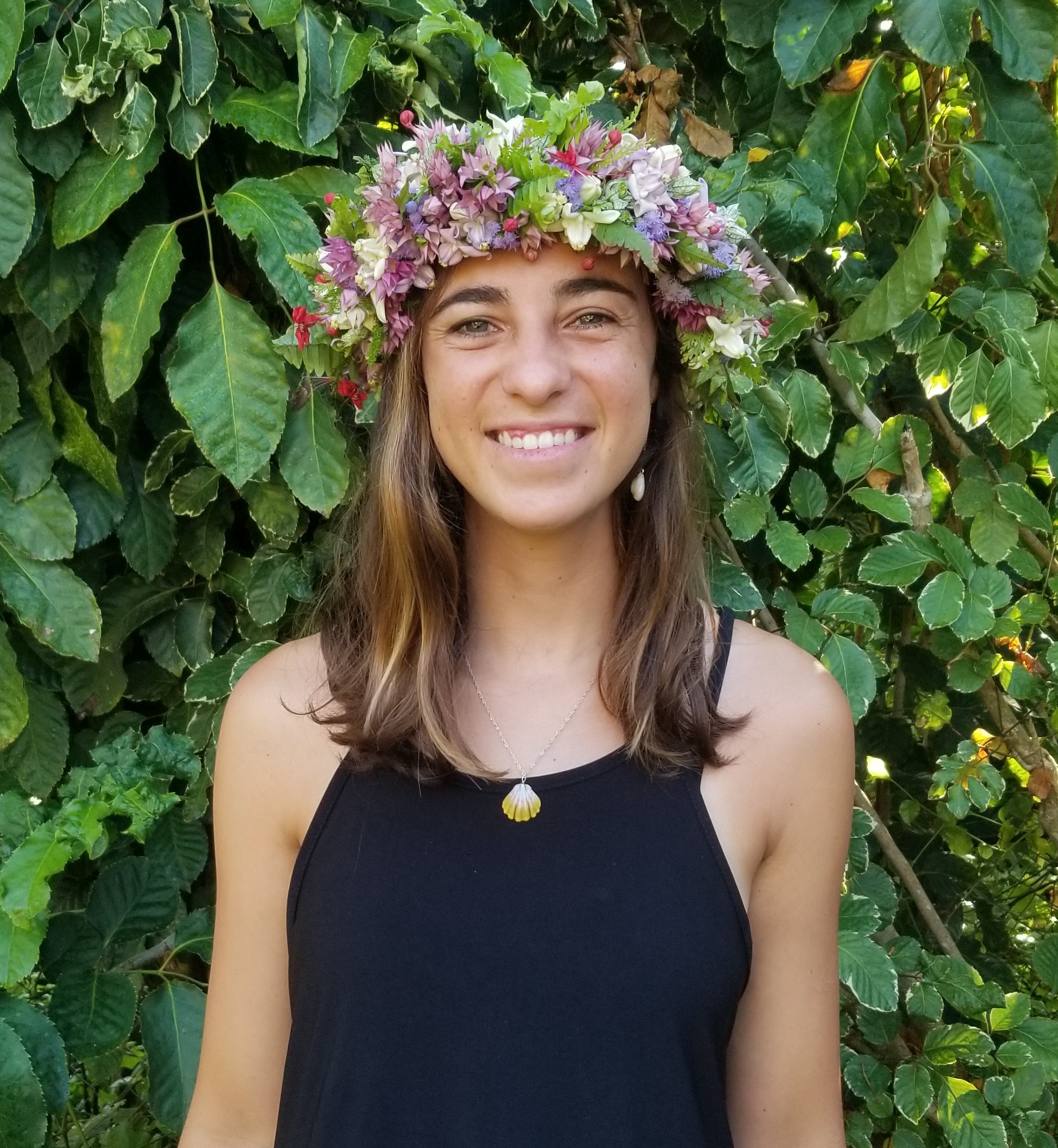 Keilani grew up in Waimanalo, Hawai‘i with a passion for surfing and any ocean related activity. Her love for the ocean and the outdoors led her to pursue an undergraduate degree at Occidental College in geology. After returning to Hawai‘i and working as a kayak guide and water quality monitoring technician, she decided to further her education in the TCBES program and study coral reefs in the Hawaiian Islands. Her project was entitled, “Examining patterns in coral demographic events in Papahānaumokuākea Marine National Monument”. Upon graduating, she hopes to work for a conservation organization doing educational, communication, or spatial analysis work and she looks forward to bringing with her her experiences and skills learned in the TCBES program.
Keilani grew up in Waimanalo, Hawai‘i with a passion for surfing and any ocean related activity. Her love for the ocean and the outdoors led her to pursue an undergraduate degree at Occidental College in geology. After returning to Hawai‘i and working as a kayak guide and water quality monitoring technician, she decided to further her education in the TCBES program and study coral reefs in the Hawaiian Islands. Her project was entitled, “Examining patterns in coral demographic events in Papahānaumokuākea Marine National Monument”. Upon graduating, she hopes to work for a conservation organization doing educational, communication, or spatial analysis work and she looks forward to bringing with her her experiences and skills learned in the TCBES program.
Robert Lee Justice III
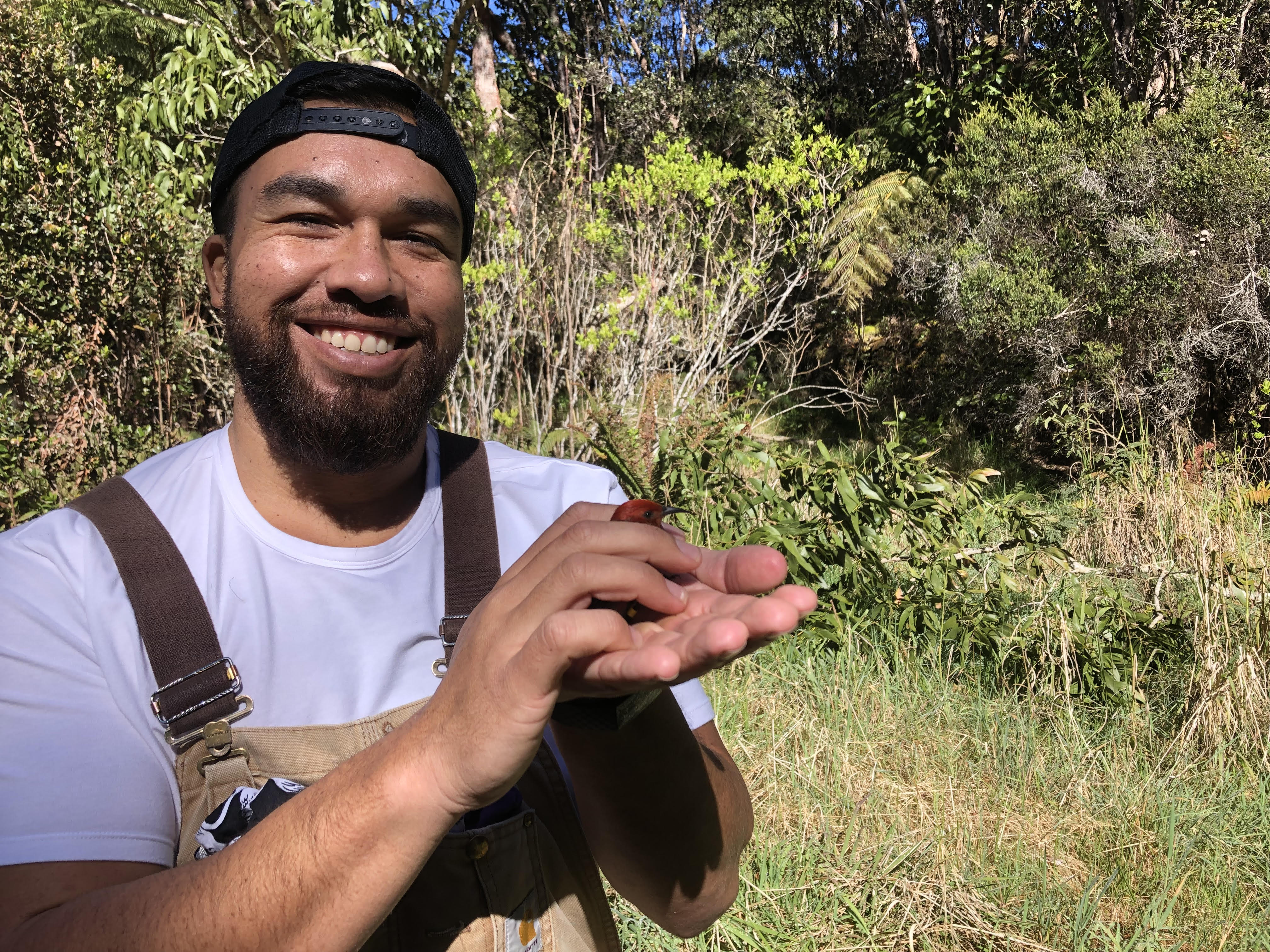 Robert is from NorCal, before coming to graduate school he spent 5 years gaining experience doing a wide variety of field work pertaining to birds ranging from demography studies to acoustic monitoring. He came to graduate school to get a master's degree so that he could go back to doing field work and get paid a livable wage. His project is entitled, “Identifying the Relationship between Vocal Repertoire, Age, and Social Interactions in the ˊAlalā”. He is currently working for Forest Solutions as a Wildlife Specialist.
Robert is from NorCal, before coming to graduate school he spent 5 years gaining experience doing a wide variety of field work pertaining to birds ranging from demography studies to acoustic monitoring. He came to graduate school to get a master's degree so that he could go back to doing field work and get paid a livable wage. His project is entitled, “Identifying the Relationship between Vocal Repertoire, Age, and Social Interactions in the ˊAlalā”. He is currently working for Forest Solutions as a Wildlife Specialist.
Lisa Mason
Lisa is from Hilo, Hawaiʻi. Her thesis is on characterizing vocalizations of Palila (Loxioides bailleui) on Mauna Kea. Her research has been conducted primarily in Kaʻohe, Hawaiʻi. Palila are the only known birds in Hawaiʻi that feast on the toxic seeds of the māmane tree, which provides a consistent food source across their range year-round on Mauna Kea. Māmane seeds make up a significant part of Palilaʻs diet, however they may also drink the nectar and eat the flowers of the māmane and naio trees too. Palila are loud and messy eaters and will spend much of their day foraging in small flocks. Sometimes you can catch a glimpse of Palila mid-meal with a vibrant green "māmane mash" covering their bills! As part of her thesis project, she has spent several field seasons tracking and recording the vocalizations of wild Palila. Her research seeks to understand whether Palila vocalizations (singing repertoires) have changed significantly over the past 50-60 years. She suspects that Palilaʻs population decline has influenced Palilaʻs vocal diversity and culture. She volunteers on the Mauna Kea bird surveys (Palila counts) with Mauna Kea Forest Restoration Project and DOFAW. Last spring, she traveled to Maui with a few other LOHE Lab technicians to assist the Maui Forest Bird Recovery Project and The Nature Conservancy in the rapid mosquito and endangered bird assessments at Eastern Waikamoi Preserve. From 2019-2021, she was a member of the TCBES Kaiameaola club and helped plan the 2020 annual symposium and 2020 Women in STEM conference, and recruited and supported subsequent officers in their leadership roles. She developed several STEM-education outreach events for high school and middle school youth highlighting the work of LOHE Lab and other graduate students in TCBES with a local organization called NexTech Hawaiʻi. She also completed a KUPU Conservation Leaders Development Program term in 2021 with the Hawaiʻi Endangered Bird Conservation Program and San Diego Zoo investigating factors influencing breeding success in ʻālala. Currently, she supports the LOHE Labʻs BirdNET collaboration by contributing Palila field recordings and analyzing them for the development of automated detection software for Hawaiian birds. She feels blessed and honored to help support our native forests and birds through this research. She feels a greater sense of connection and purpose in her work that is grounded in her maoli ancestry and the time spent building relationships between her ʻohana and Mauna Kea. She is fortunate to have been able to include my ʻohana on this journey with me. A challenge for her has been balancing her activities, projects, and thesis work. She has many interests that sometimes take priority over her thesis. But, she says, itʻs all good to explore different areas in conservation, and to take time to build relationships across diverse communities because you never know, unless you look, what unique and exciting opportunities lie just around the corner.
Dawn McSwain
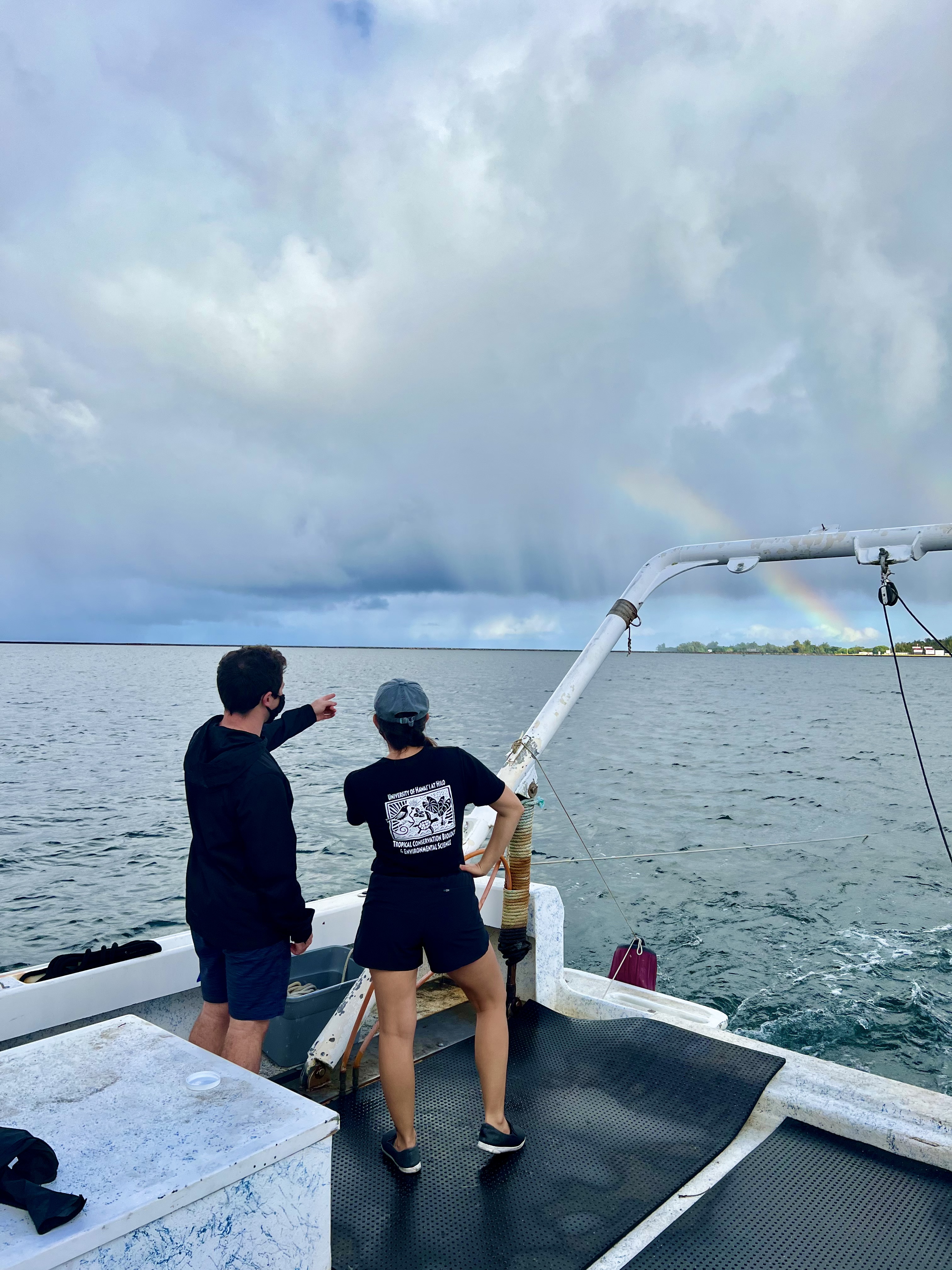 Dawn is from Washington State. Her thesis was titled, “Mixotrophic plasticity in corals: A meta-analysis using innovative text analytic tools”. She conducted her research at Waiakea Ahupua'a in Hilo, Hawai‘i. A fun fact about her study system is that corals help remove carbon dioxide from the water, and ultimately the atmosphere, so they are incredibly important organisms that can help mitigate the impacts of climate change. Dawn also had the opportunity to teach the undergraduate oceanography laboratory courses at UH Hilo. This experience helped her to build her own oceanographic and seafaring skills while giving her the chance to help educate the next generation of scientists. She found it to be an incredibly rewarding experience that she will be forever grateful for. Her favorite part of her thesis was getting to work with a variety of researchers across different fields. Seeing how they approached their own research questions helped her to find different ways to approach her own. She says the most challenging part of her thesis was teaching herself how to use Python!
Dawn is from Washington State. Her thesis was titled, “Mixotrophic plasticity in corals: A meta-analysis using innovative text analytic tools”. She conducted her research at Waiakea Ahupua'a in Hilo, Hawai‘i. A fun fact about her study system is that corals help remove carbon dioxide from the water, and ultimately the atmosphere, so they are incredibly important organisms that can help mitigate the impacts of climate change. Dawn also had the opportunity to teach the undergraduate oceanography laboratory courses at UH Hilo. This experience helped her to build her own oceanographic and seafaring skills while giving her the chance to help educate the next generation of scientists. She found it to be an incredibly rewarding experience that she will be forever grateful for. Her favorite part of her thesis was getting to work with a variety of researchers across different fields. Seeing how they approached their own research questions helped her to find different ways to approach her own. She says the most challenging part of her thesis was teaching herself how to use Python!
Amanda Navine
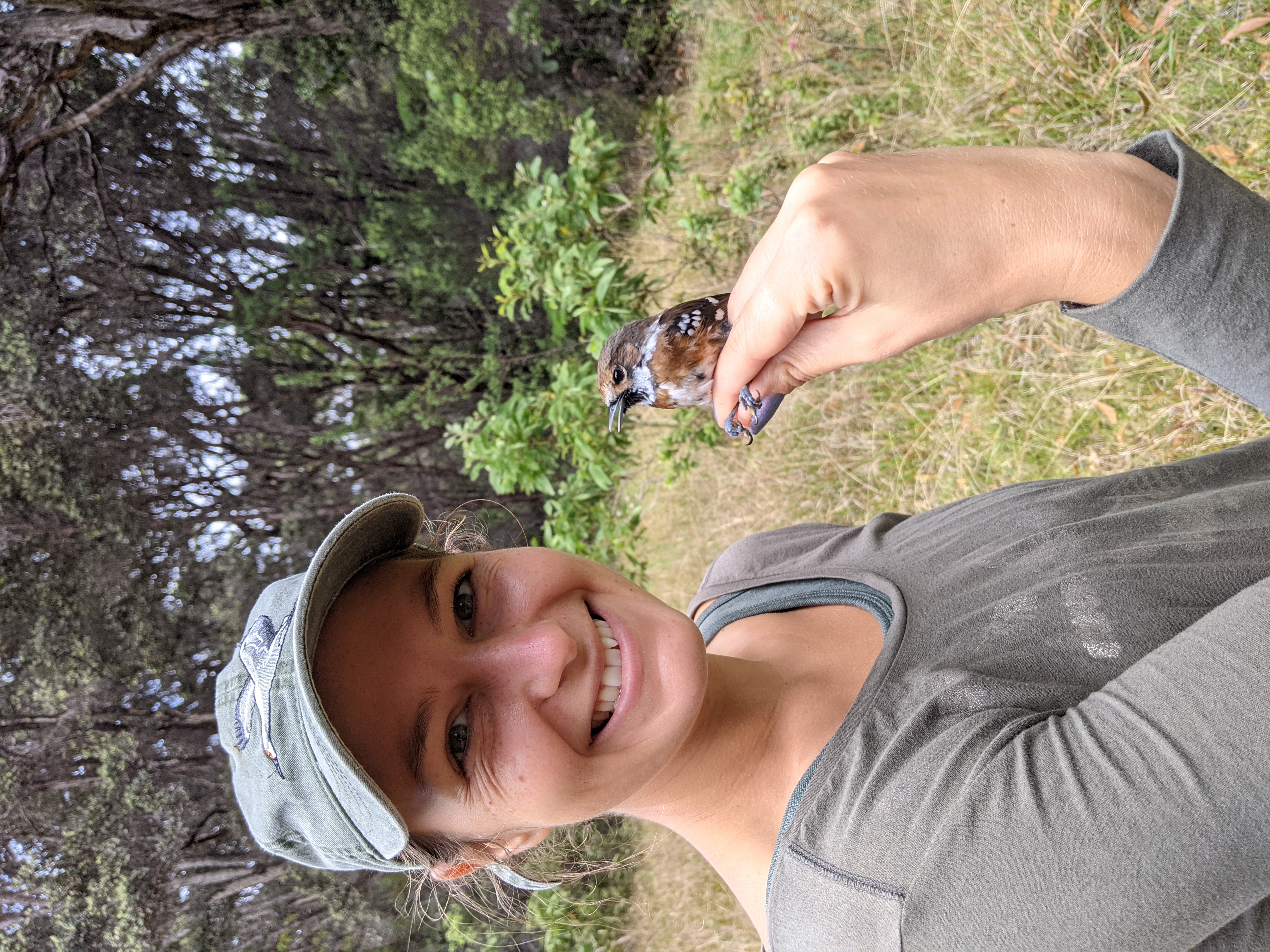 Amanda is from Wisconsin. She conducted her thesis on avian malaria and the gut microbiome in Hawaiian honeycreepers all Across Hawai'i Island. Amanda sees how her focal species, the Hawai'i 'Amakihi, is a symbol of hope because their populations have started rebounding despite increased disease pressure on the island. One of her favorite parts of my research was being able to participate in sample collection in the field where she caught birds in mist nets. She got to travel to Washington D.C. to analyze samples at the Smithsonian Biological Institute's Center for Conservation Genomics (CCG), which was a unique learning opportunity. She also joined the CCG's Microbiome Journal Club and has gotten to learn a lot more about her study system from a group of researchers of varying experience in the field which she’s found really intellectually stimulating. She has loved having ownership of my project and being a part of every step of the scientific process. Her thesis experience really solidified her love for science, research, and conservation, and was one of the most rewarding things she has worked on. Getting results that have the potential to inform conservation initiatives to save endangered birds made her incredibly happy and proud of her work. Her thesis had its challenges though: “My project changed about half a million times before my committee and I finally settled on my microbiome project, mainly due to COVID-19 interruptions, and it was stressful to have to start over a couple of times. But ultimately, I'm really glad this project was the one I ended up doing, I loved every piece of it”.
Amanda is from Wisconsin. She conducted her thesis on avian malaria and the gut microbiome in Hawaiian honeycreepers all Across Hawai'i Island. Amanda sees how her focal species, the Hawai'i 'Amakihi, is a symbol of hope because their populations have started rebounding despite increased disease pressure on the island. One of her favorite parts of my research was being able to participate in sample collection in the field where she caught birds in mist nets. She got to travel to Washington D.C. to analyze samples at the Smithsonian Biological Institute's Center for Conservation Genomics (CCG), which was a unique learning opportunity. She also joined the CCG's Microbiome Journal Club and has gotten to learn a lot more about her study system from a group of researchers of varying experience in the field which she’s found really intellectually stimulating. She has loved having ownership of my project and being a part of every step of the scientific process. Her thesis experience really solidified her love for science, research, and conservation, and was one of the most rewarding things she has worked on. Getting results that have the potential to inform conservation initiatives to save endangered birds made her incredibly happy and proud of her work. Her thesis had its challenges though: “My project changed about half a million times before my committee and I finally settled on my microbiome project, mainly due to COVID-19 interruptions, and it was stressful to have to start over a couple of times. But ultimately, I'm really glad this project was the one I ended up doing, I loved every piece of it”.
Nikola Rodriguez
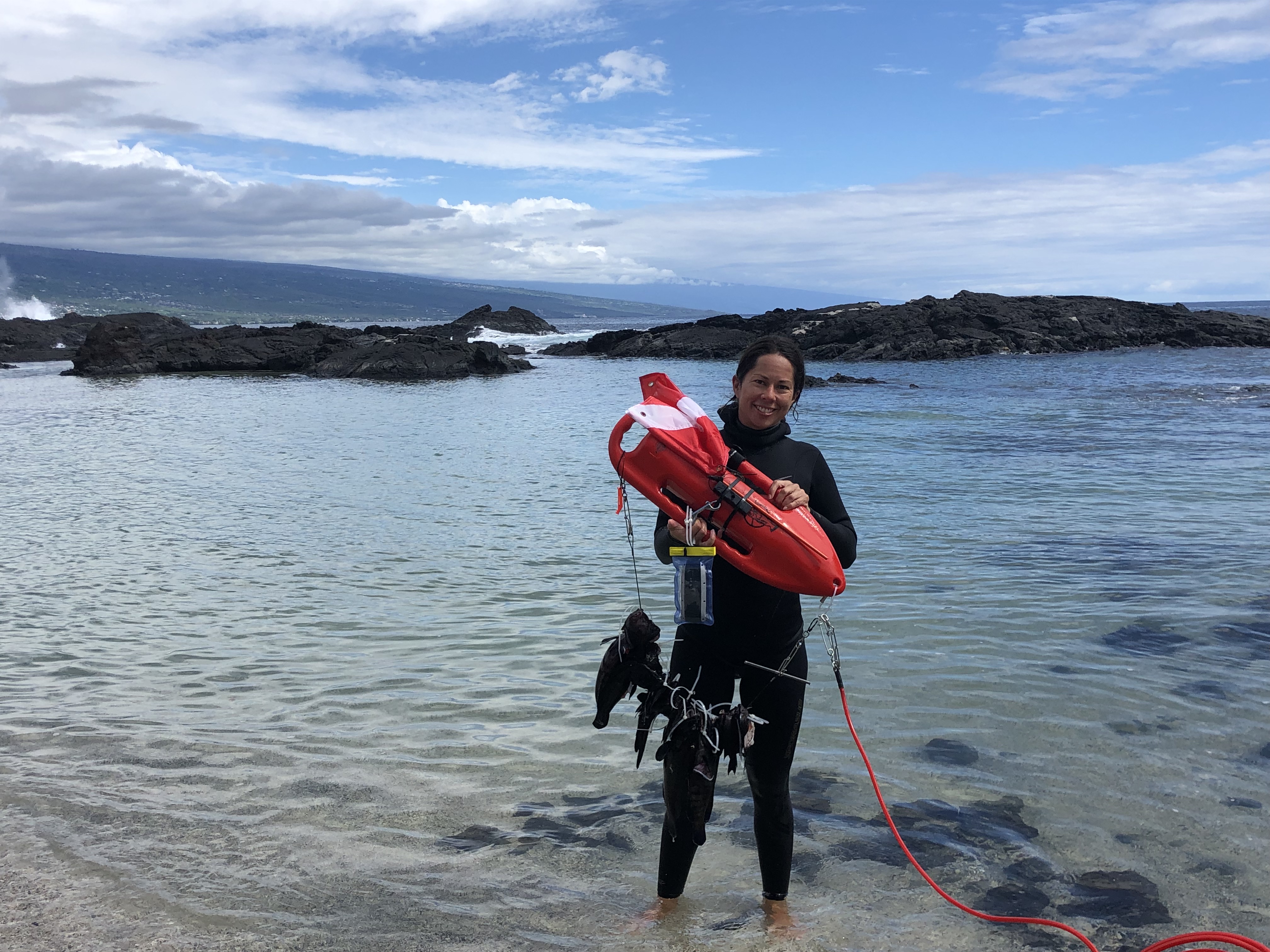 Nikola is from Fairmont Hot Springs, B.C., Canada. She conducted her thesis on how mass bleaching events will affect the prevalence of Ciguatera on Hawaiian reefs along West Hawaii, Hawai‘i Island at Puako, 'Anaeho'omalu Bay, Halepa'o, and Ke'ei. She says, “all spearfishers have a story about ciguatera fish poisoning. They either have had it, know someone who has had it before, or have a method/theory on how to avoid getting it”. For her research, Nikola reached out to local spearfishers for their local knowledge about her study sites and for their assistance collecting roi and kole. 99% of her fish samples have been collected by volunteer spearfishers. Her favorite part of the thesis experience was being out in the ocean with amazing spearfishers and getting to hear all of their dive stories and fishing tales. The people she has been able to dive with have made her a better spearfisher just by being able to watch and learn from them in the water. The most challenging thing she did for her thesis was learning how to extract ciguatoxins from fish samples to see if they are ciguatoxic.
Nikola is from Fairmont Hot Springs, B.C., Canada. She conducted her thesis on how mass bleaching events will affect the prevalence of Ciguatera on Hawaiian reefs along West Hawaii, Hawai‘i Island at Puako, 'Anaeho'omalu Bay, Halepa'o, and Ke'ei. She says, “all spearfishers have a story about ciguatera fish poisoning. They either have had it, know someone who has had it before, or have a method/theory on how to avoid getting it”. For her research, Nikola reached out to local spearfishers for their local knowledge about her study sites and for their assistance collecting roi and kole. 99% of her fish samples have been collected by volunteer spearfishers. Her favorite part of the thesis experience was being out in the ocean with amazing spearfishers and getting to hear all of their dive stories and fishing tales. The people she has been able to dive with have made her a better spearfisher just by being able to watch and learn from them in the water. The most challenging thing she did for her thesis was learning how to extract ciguatoxins from fish samples to see if they are ciguatoxic.
Kathryn L. Strong
 Kathryn grew up in the northeast of the continental U.S, but has lived and worked in Southeast Asia, Latin America, California, and Hawai'i. Kathryn conducted her thesis on developing a Fourier-transform Infrared (FT-IR) Spectroscopy Classification Tool to Identify Common Beach Plastics on Hawai'i Island. She conducted this study at sixteen beach locations around Hawai'i Island. A fun fact she found is that the most common plastics found on Hawai'i Island beaches can be transformed into recycled energy. Kathryn spends her free time outside and in the ocean. She tries to pick up at least three pieces of plastic trash from the beach every time she visits. Her favorite part of the thesis experience was working in the university’s chemistry lab. The most challenging part was developing a working plastic polymer identification tool.
Kathryn grew up in the northeast of the continental U.S, but has lived and worked in Southeast Asia, Latin America, California, and Hawai'i. Kathryn conducted her thesis on developing a Fourier-transform Infrared (FT-IR) Spectroscopy Classification Tool to Identify Common Beach Plastics on Hawai'i Island. She conducted this study at sixteen beach locations around Hawai'i Island. A fun fact she found is that the most common plastics found on Hawai'i Island beaches can be transformed into recycled energy. Kathryn spends her free time outside and in the ocean. She tries to pick up at least three pieces of plastic trash from the beach every time she visits. Her favorite part of the thesis experience was working in the university’s chemistry lab. The most challenging part was developing a working plastic polymer identification tool.
Erica Ta
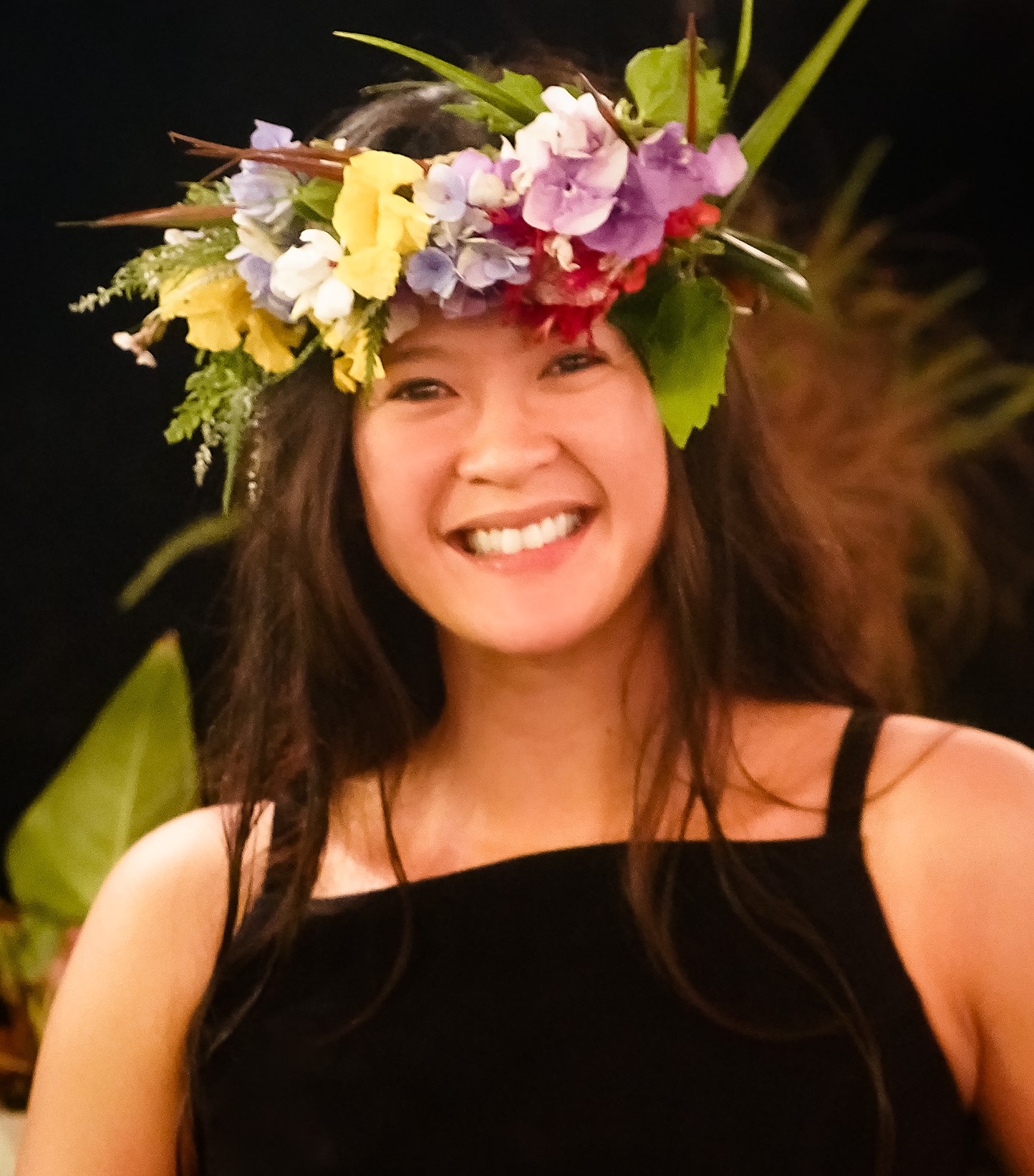 Erica is from Southern California. She conducted her thesis on invasive species detection using deep learning techniques. Erika’s thesis used imagery collected in the Waiākea, ʻŌlaʻa, Kapāpala, and Kahuku ahupuaʻa. One thing she found really interesting about her study was that deep learning computer models can learn to perform tasks directly from images, videos, text, or even sound! As a member of the Spatial Data Analysis and Visualization (SDAV) Lab, she attended community events to share different geospatial tools and products from their research. Apart from strictly research, she was president of the Kaiameaola Club (formerly TCBES Maters Club) from 2019-2020, which hosted events and created merchandise for TCBES students. Through the club's platform and resources, they were also able to collaborate with amazing scientists across University of Hawaiʻi to organize the 2nd annual Women in STEM Conference at UHH for the general community. The aspect of her thesis Erika enjoyed most was collaborating nonstop with experts and folks from different disciplines. Exchanging interdisciplinary information was a great way to engage with new communities and learn from their skills and ideas. Since deep learning was a brand new concept to her, the biggest challenge in her thesis was learning how deep learning works "on the go" and making sure her research applies and portrays deep learning concepts correctly. Deep learning can feel like a big behemoth, so she felt uneasy at times because she couldn't tell what she did not know or what she was missing. She learned that sharing issues and asking questions about your research process is very important!
Erica is from Southern California. She conducted her thesis on invasive species detection using deep learning techniques. Erika’s thesis used imagery collected in the Waiākea, ʻŌlaʻa, Kapāpala, and Kahuku ahupuaʻa. One thing she found really interesting about her study was that deep learning computer models can learn to perform tasks directly from images, videos, text, or even sound! As a member of the Spatial Data Analysis and Visualization (SDAV) Lab, she attended community events to share different geospatial tools and products from their research. Apart from strictly research, she was president of the Kaiameaola Club (formerly TCBES Maters Club) from 2019-2020, which hosted events and created merchandise for TCBES students. Through the club's platform and resources, they were also able to collaborate with amazing scientists across University of Hawaiʻi to organize the 2nd annual Women in STEM Conference at UHH for the general community. The aspect of her thesis Erika enjoyed most was collaborating nonstop with experts and folks from different disciplines. Exchanging interdisciplinary information was a great way to engage with new communities and learn from their skills and ideas. Since deep learning was a brand new concept to her, the biggest challenge in her thesis was learning how deep learning works "on the go" and making sure her research applies and portrays deep learning concepts correctly. Deep learning can feel like a big behemoth, so she felt uneasy at times because she couldn't tell what she did not know or what she was missing. She learned that sharing issues and asking questions about your research process is very important!
Rebecca Ward
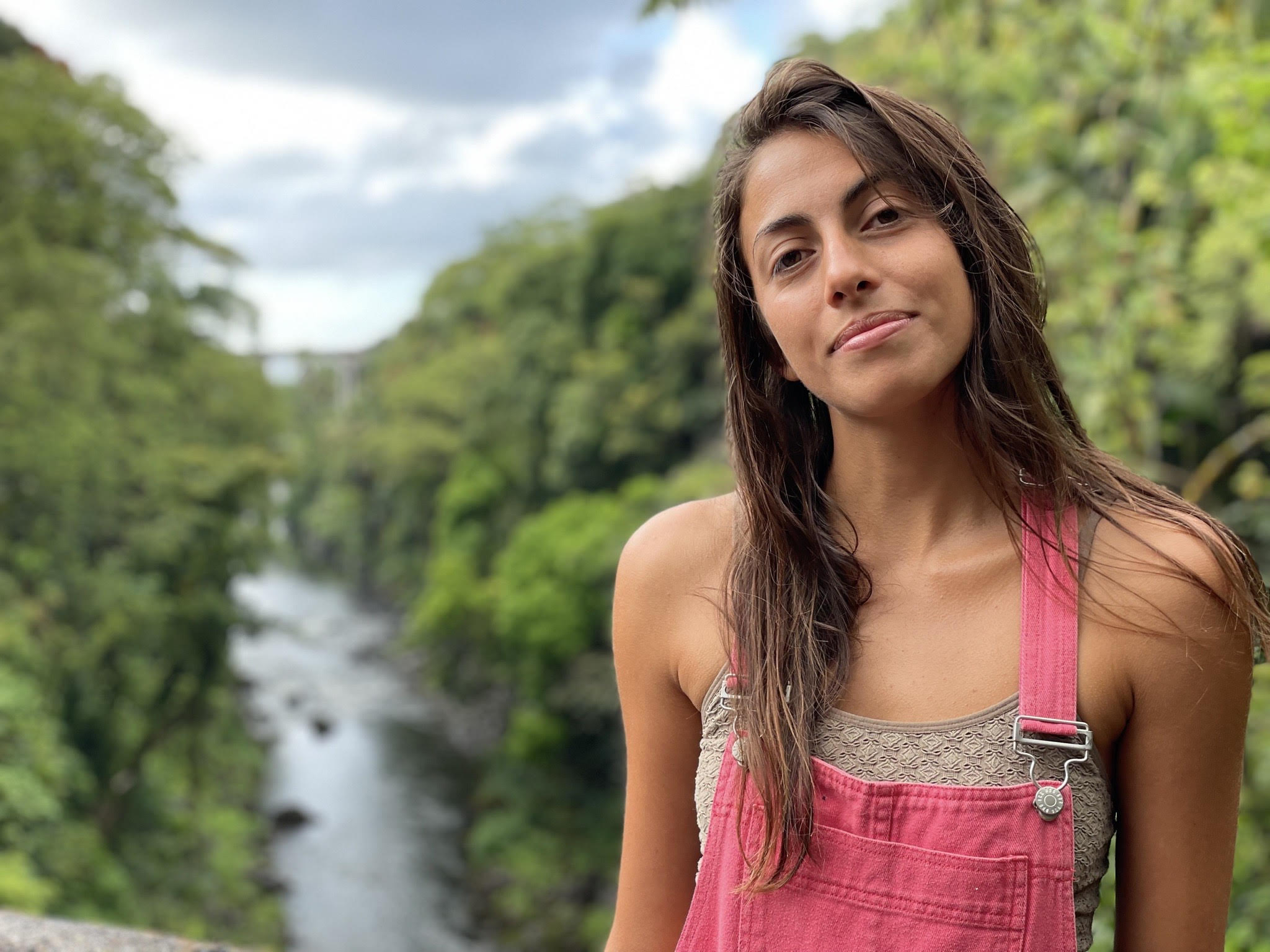 Rebecca was born in Cartagena, Colombia but spent most of her childhood in Georgia. She is passionate about engaging with nature as a form of empowerment, both for herself and others. The desire to continually grow, learn, and give back to the people and places around her has guided Becca's academic and professional career. Her past experiences have explored many of the avenues for environmental communication and education. Her project is entitled, “Spatial Variation in Sea Surface Temperature (SST) and Antecedent SST Conditions Influence Community Structure in the Hawaiian Intertidal”. Becca's Master's research worked to validate community- and citizen-science initiatives. Using data collected by middle and high school students across the state, she investigated Hawaiʻi's accelerated rate of ocean warming and its effect on intertidal communities. Becca is currently working with the Akaka Foundation, a non-profit based in Hilo, that helps cultivate collaborations between teachers and scientists in Hawaiʻi to develop place-based curriculum. She recently transitioned to Colorado and is excited to further her career in a new setting and invest in non-ocean hobbies like climbing and white-water kayaking. The three years spent in Hilo were an influential time of change in her life. She is forever grateful for the strong support of her community, the many early surf sessions, and the nightly fish fries.
Rebecca was born in Cartagena, Colombia but spent most of her childhood in Georgia. She is passionate about engaging with nature as a form of empowerment, both for herself and others. The desire to continually grow, learn, and give back to the people and places around her has guided Becca's academic and professional career. Her past experiences have explored many of the avenues for environmental communication and education. Her project is entitled, “Spatial Variation in Sea Surface Temperature (SST) and Antecedent SST Conditions Influence Community Structure in the Hawaiian Intertidal”. Becca's Master's research worked to validate community- and citizen-science initiatives. Using data collected by middle and high school students across the state, she investigated Hawaiʻi's accelerated rate of ocean warming and its effect on intertidal communities. Becca is currently working with the Akaka Foundation, a non-profit based in Hilo, that helps cultivate collaborations between teachers and scientists in Hawaiʻi to develop place-based curriculum. She recently transitioned to Colorado and is excited to further her career in a new setting and invest in non-ocean hobbies like climbing and white-water kayaking. The three years spent in Hilo were an influential time of change in her life. She is forever grateful for the strong support of her community, the many early surf sessions, and the nightly fish fries.
